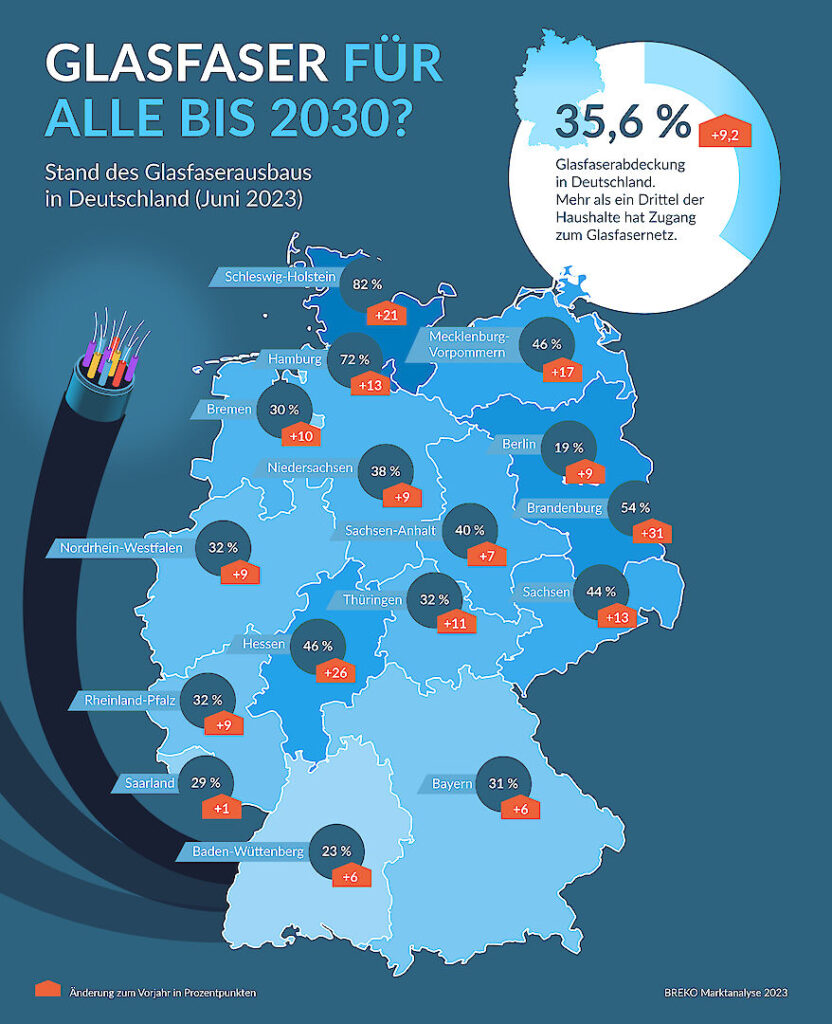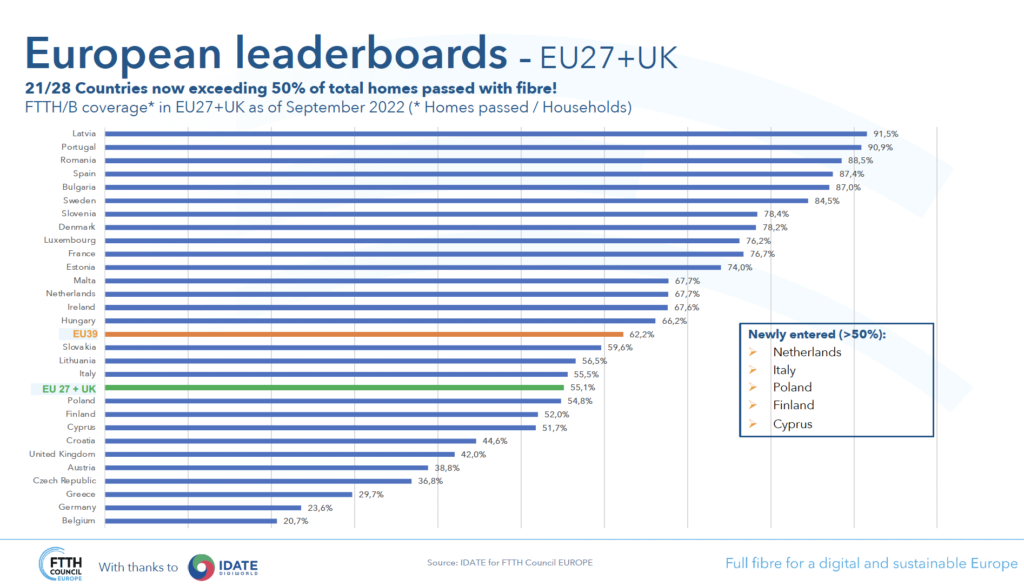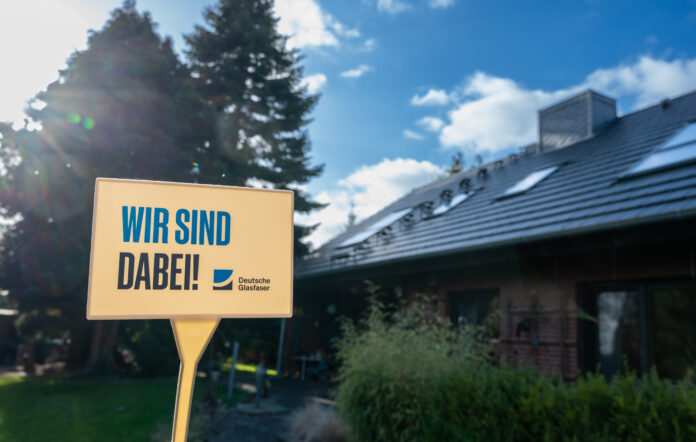A new Federal report says fibre coverage has now reached 35.6% of the country, but warns of possible “brakes”
The Federal Association of Broadband Communication (BREKO) has published analysis of the German broadband market. As of the end of June, there was 35.6% fibre coverage (up from 26% at the same point in 2022, and from 17.7% in 2021), which means it is on track to hit the Federal Government’s goals.
It notes that Telekom Deutschland’s competitors have made record investments, collectively spending €8.4 billion and speeding up the build-out. BREKO’s report says the northern state of Schleswig-Holstein is leading the country with its fibre coverage (see below) while the city of Brandenburg has the greatest growth in fibre connections.

Not so fast
Germany, Europe’s biggest economy, is one of Europe’s laggards in its fibre roll-out, along with some of the continent’s other biggest economies, most notably the UK and Italy, and is playing catch-up.
The FTTH Council Europe’s most recent figures (based on data from September 2022) show that the FTTH/B coverage rate in EU39* is 62.2% (up by 5% compared to 2021) and the coverage rate in the EU27+UK officially exceeds half of all homes (55.1% versus 48.5% from 2021). In other words, there’s still a long way to go.

Breaks and brakes
BREKO’s report is concerned that the pace of fibre deployment could be slowed by the shortage of skilled workers, long-winded approval processes and the tactical overbuilding in more than 220 municipalities.
The latter worry came to the fore in June when the reports of a survey carried out the previous month by the Verband kommunaler Unternehmen (German Association of Local Public Utilities/VKU) was published. Some 62% of respondents from municipal telecoms providers said they were threatened by rivals overbuilding their infrastructure. They identified Telekom Deutschland was identified as the chief perpetrator
In total, 89% of municipal providers said they offer open access on their networks or intend to. Ingbert Liebing, Head of VKU in Berlin, was quoted saying, “technically, there is no reason to build your own network where others already provide a fibre-optic network”.
Telekom Deutschland insisted it is normal competitive practice to overbuild existing fibre infrastructure where it makes economic sense to do so and was keener to emphasise that in April it passed 150,000 premises with fibre, bringing its total close to 6 million. It also stressed its partnering arrangements with 21 regional players.
The dangers of overbuilding are also underlined in today’s story about German fibre network operator Tele Columbus.
Subterranean chaos
A further menace was not mentioned by BREKO but was spelled out in a report by Bloomberg, also in May. It seems new deployment techniques, like micro trenching, are making it ever harder to track the increasingly dense mesh of the estimated 5.7 million km of ducts, pipes and cables in Germany belonging to telecoms firms, power providers and distributors, transport networks, sewage and water companies.
The report points out that in February, Lufthansa was forced to ground all its flights after fibres were accidentally severed by a contractor working for Telekom Deutschland. More such incidents look highly likely in future as, according to Bloomberg, the last comprehensive subterranean schematic was produced during the Third Reich.
This lack of a centralised repository is also holding up the country’s $1 trillion (€923 billion) drive to build renewable power sources.
* 27 EU member states plus four Commonwealth of Independent States (including Kazakhstan and Ukraine), Iceland, Israel, North Macedonia, Norway, Serbia, Switzerland and Turkey


